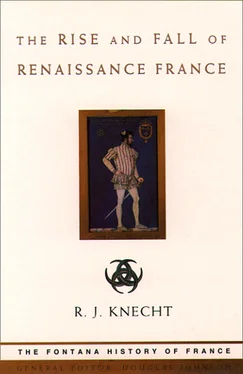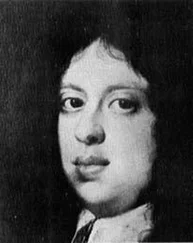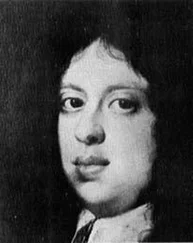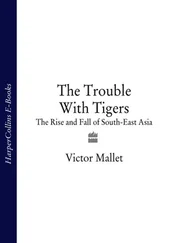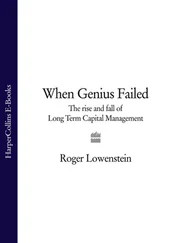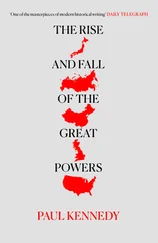The Rise and Fall of Renaissance France
1483–1610
R. J. KNECHT
Fourth Estate
An Imprint of HarperCollins Publishers 1 London Bridge Street London SE1 9GF
www.harpercollins.co.uk
Published by Fontana Press 1996
Copyright © R. J. Knecht 1996
R. J. Knecht asserts the moral right to be identified as the author of this work
A catalogue record for this book is available from the British Library
All rights reserved under International and Pan-American Copyright Conventions. By payment of the required fees, you have been granted the nonexclusive, nontransferable right to access and read the text of this ebook on screen. No part of this text may be reproduced, transmitted, downloaded, decompiled, reverse engineered, or stored in or introduced into any information storage and retrieval system, in any form or by any means, whether electronic or mechanical, now known or hereinafter invented, without the express written permission of HarperCollins e-books.
Source ISBN: 9780007292097
Ebook Edition © DECEMBER 2012 ISBN 9780007393381
Version: 2016-01-12
HarperCollinsPublishers has made every reasonable effort to ensure that any picture content and written content in this ebook has been included or removed in accordance with the contractual and technological constraints in operation at the time of publication.
In memory of Germaine Ganier
Cover
Title Page
Copyright
Dedication
General Editor ’ s Introduction
A Note on Coinage and Measures
Map of France (1494)
Map of France (1585–98)
PREFACE
1 France in 1500
2 The minority of Charles VIII and the Breton marriage (1483–94)
3 Charles VIII and the Italian Wars (1494–8)
4 Louis XII, ‘Father of the people’ (1498–1515)
5 The church in crisis
6 Francis I: The first decade (1515–25)
7 The New Learning and heresy (1483–1525)
8 Defeat, captivity and restoration (1525–7)
9 War and peace (1527–38)
10 The court and patronage of Francis I
11 Francis I: The last decade (1537–47)
12 The absolutism of Francis I
13 Henry II, the victor of Metz (1547–52)
14 The arts and literature under Henry II
15 Henry II: The tragic peace (1553–9)
16 France overseas
17 The mid-century crisis
18 The failure of conciliation (1559–62)
19 The First Civil War (1562–3)
20 The fragile peace (1563–6)
21 The Second and Third Civil Wars (1566–70)
22 The St Bartholomew’s day massacres (1572)
23 Literary responses
24 Fraternal discord (1573–83)
25 Henry III and his court
26 The Catholic League (1584–92)
27 The triumph of Henry IV (1593–1610)
CONCLUSION
Bibliography and Rtiferences
Glossary
Genealogies
Index
About the Author
The Fontana History Series
About the Publisher
General Editor’s Introduction
If one stands by the west wall of the church at Penmarc’h, by the Atlantic coast in south-west Brittany, one sees how this building was intended to be on a grand scale. Founded in 1508, it was to be paid for by the shipbuilders and shipowners of the parish, a testimony to their wealth as well as to their faith. The heads of three of them are depicted on the wall. Penmarc’h was then one of the most important and flourishing ports of France, sending ships south to Portugal and north to Britain, trading in fish and wine. It was natural that carvings of ships, fish, seagulls and sailors should decorate the church walls. But the great tower which was to crown the west wall was never completed. No statues were erected. Penmarc’h’s prosperity rapidly disappeared as the discovery of Newfoundland brought activity to the Normandy coast and as larger ships, some as large as 300 tons, took over the trade. The flat-bottomed boats of Penmarc’h, which were beached on the sand and on the river-beds, could not compete. Penmarc’h fell into obscurity, its only fame being its legends. A sad song tells how at night its people used to set up decoy lights to lure ships on to the rocks. One night they wrecked a ship only to discover that it had on board their own children, who drowned before their eyes.
Penmarc’h tells us about France in the early modern period. We see how people in a distant part of the country successfully organized an inland as well as an external trade, supplying fish and seaweed as well as wine. We see how they could move rapidly from prosperity to poverty. Penmarc’h had its own town council to look after its affairs. In 1508 their ambition was to build a monumental church which would rival that of Quimper. They used to meet in the south porch and discuss all matters that concerned their locality, a practice that was encouraged by the senior clergy. The cult of saints was very specific. The church was dedicated to St Nonna, who had been archbishop of Armagh in the sixth century, and nearby, within Penmarc’h, the sixteenth-century chapel of Kerity was dedicated to the obscure St Thumette, who was a follower of St Ursuline and was beheaded. Penmarc’h was by no means isolated from the rest of France. In 1595, Fontenelle and his followers broke into the church by the north door and massacred some 3000 people who had taken refuge there. Fonetenelle was an adventurer, fighting against Henry IV. Thus Penmarc’h was acquainted with the Wars of Religion.
Sixteenth-century France has to be seen in the context of the world beyond its borders. But Michelet meant more than this when, lecturing at the collège de France in 1841, he said that at the beginning of the sixteenth century France discovered that she was essential to Europe. There could be no Europe without France. France was always young and modern, and by the middle of the century was the most populous country in Europe. Towards the end of the previous century observers had lamented the desolation of a deserted countryside; now everything changed. By the 1550s it was said in Languedoc that men were multiplying like mice in a barn. But this large population was encircled by foreign countries. The powerful Charles V, master of territories that surrounded France, sought to reduce her power and to seize Burgundy, the country of his ancestors. France could not accept these limitations imposed by the Habsburgs. For some eighteen years, from 1541 to 1559, France was at war with Charles V and his successor Philip II. National sentiment grew and by the time of Ronsard’s poetry, the evocation of the strength and virtues of France had become one of the great themes of its literature. This at a time when the French language was becoming the language of medicine, science and history.
This was the time, too, when the Venetian ambassadors reported that while France was not necessarily the richest or the most powerful of countries, it was the easiest to govern. The strength of France lay in its unity and the obedience of its inhabitants, who had given all power to the throne. Professor Knecht shows how such a judgement was far from being accurate. But the most famous work of the Savoyard bishop Claude de Seyssel was entitled La Monarchie de France. The power of kings did increase. The monarch was the agent who would preserve the harmony of the kingdom. A series of kings who ruled majestically and responsibly acquired a reserve and a stock of power that even the most foolish ruler could not exhaust. Yet central government retained its uncertainties, as when Henry II was killed while jousting, or Henry IV, in August 1589, found himself without subjects, without an administration, without money, obliged to undertake the conquest of his kingdom. Central government retained its limitations, since while the territorial unity of the country made progress, certain provinces retained their institutions along with their traditions.
Читать дальше
